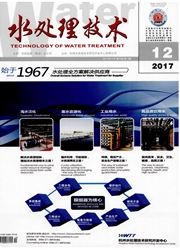

 中文摘要:
中文摘要:
采用羧甲基纤维素钠(CMC)辅助微波水热法合成了不同形貌和尺寸的单斜晶型Bi VO4,借助X射线衍射仪、场发射扫描电子显微镜及紫外-可见漫反射光谱手段对样品进行表征,并以茜素红S为降解物来探究其可见光催化性能。结果表明,微波水热温度高,样品结晶度更好,带隙更窄;微波水热时间长,样品尺寸更小。微波水热过程中前驱液中的颗粒发生了成核、溶解再结晶反应。样品带隙为2.37~2.44 e V,均对可见光具有良好吸收。120℃微波水热90 min条件下制备的样品平均粒径约为60 nm,可见光催化活性最好。样品的形貌和尺寸对可见光催化性能的影响比其结晶度大。
 英文摘要:
英文摘要:
Monoclinic scheetlite Bi VO4 with various sizes and morphologies were successfully synthesized via a microwave hydrothermal method using sodium carboxymethylcellulose(CMC) as a surfactant. The obtained samples were characterized by XRD, FE-SEM and UV-vis techniques. And alizarin red S(ARS) were used for target pollutant to test the photocatalytic performance of visible light. The results revealed that high microwave temperature led to better crystallinity and a narrower band gap of Bi VO4. Meantime, long microwave time contributed to a smaller size. It was indicated that the nucleationdissolution-recrystallization reaction happed in precursor solution during the microwave-hydrothermal process. All obtained samples showed strong visible light absorption and their band gaps were between 2.37~2.42 e V. The sample with a average size of about 60 nm was prepared at 200 ℃ for 90 min under microwave irradiation and its photocatalytic activity was best. The photocatalytic activity was easier to be influenced by sizes and morphologies than the crystallinity.
 同期刊论文项目
同期刊论文项目
 同项目期刊论文
同项目期刊论文
 期刊信息
期刊信息
